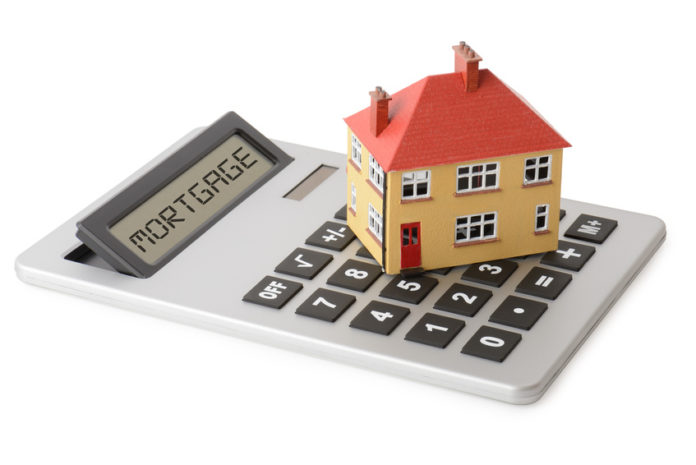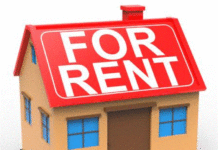Napkin Math
For those of us that purchase income producing property on a regular basis, evaluating whether a potential purchase is worth purchasing can become second nature. For those who are new to the idea of investing, it can seem overwhelmingly intimidating. I get it. When I first started I was unsure how to recognize if a deal really was a deal. I spent so much time, and more importantly energy, thinking about, talking about, and analyzing deals that I never got much done. Today I’m going to talk about the “napkin” method of analyzing if a property will make you money or cost you money. It’s referred to as the napkin method because the numbers can be scribbled out on a napkin, added up, then subtracted from the amount of the expected rent. While this is by no means the only or even the most effective way to analyze a property, it does go to show that real estate doesn’t need to be nearly as intimidating as it seems.
We start with a column. The column will include all the expenses associated with owning the property. It will typically look something like this:
Mortgage:
Property taxes:
Insurance:
Property Management fees:
Home Owners Association Dues:
Vacancy:
Repairs:
Misc:
In short, these amounts will be added up and the total subtracted from the expected rent. The difference left over is your profit, or what we in real estate investing call “cash flow”. If there is no money left over for profit, or the expenses are more than the expected rent, don’t buy it. Or find a way to pay less for the property to reduce some of these expenses until you’re making a profit. How much profit? Well that depends on the individual goals of the investor. I will tell you that the majority of investors I know aim for an 8-12% return on our money. The following is a breakdown of each expense and how to calculate it quickly.
Mortgage
Mortgages are much easier to calculate than most people think. All you need is a mortgage calculator. I downloaded a free one onto my smart phone called Mortgage Calculator Plus. If you don’t want to use your phone, there are several mortgage calculators for free online. Many people like www.bankrate.com for their variety of calculators. You can also visit www.biggerpockets.com/calc for several other investment property calculators.
To calculate what your mortgage payment will be, simply enter in the amount you expect to borrow (subtract what you will put down from the price you intend to pay for the home), enter an interest rate, and include how many years you want the loan to be for (we call this the amortization rate in fancy mortgage talk). The calculator will tell you what you monthly payment will be. Enter this into the first column.
Property Taxes
Unlike the mortgage payment, property taxes are something you have very little control of. They are what they are. Luckily, with the internet, they can be very easy to find. Sites like Zillow, Trulia, and others show a properties taxes from year to year on the site. If you’d like another way to see them, you can visit the county website where the property is located and search an individual property by its parcel number. Find the yearly amount for property taxes and divide by 12 (to get the monthly rate). Enter this into the second column.
Homeowners Insurance
Homeowners insurance is most easily acquired by calling to get a quote from an insurance company. Once you own a few homes you get a good idea for how much it will cost you a month based on the square footage and area of the home you’re looking at buying. For purposes of this method, call 3-4 insurance companies and ask for quotes. Most of the information the companies will ask for can be found online. Once you get an idea what the insurance policies are charging for a year of coverage, divide by 12 and enter this amount into the appropriate column.
Property Management
Property managers typically charge between 6-10% of the monthly rent they collect as well as a one time fee when a tenant first moves in. To calculate the property management fee, call a handful of property managers and ask what they charge. Multiply the rent you expect to collect each month by the percentage they charge and enter this amount into the column.
Homeowners Association Dues
Homeowners Association Dues (or HOA’s) are not applicable to every property. They are typically a monthly fee charged by an association for providing some measure of value to the community where properties are located. Some HOA’s come with a gated community, landscaping, a pool, a gym, or other amenities. In general I try to avoid purchasing investment property in areas with HOA’s but this isn’t a hard and fast rule. HOA’s can be found on the multiple listing service or on websites like Trulia or Zillow. A phone call or two from a real estate agent can be all it takes to find these numbers out as well. Place the amount of the monthly HOA into this column if it applies.
Vacancy
Vacancy is the amount in rent you expect to lose due to not having a tenant. Most vacancy rates in areas I invest in are about 5% of the gross rent or less. If you’re buying in an area with high rental demand, you can expect vacancy to be less. If you’re buying in an area much less popular, vacancy rates may be higher. Do a little bit of research on google or ask property managers in the area what their vacancy rates have been. Enter this amount into the column.
Repairs
Repairs can be the trickiest of the categories. Every property is different so it can be tough to tell what you’re going to pay in repairs. Some years go by without a hitch, other years an air conditioner breaks or the roof leaks and you pay more in repairs than you anticipated. I typically expect my repairs to be similar to my vacancy. As a general rule, I’ve noticed the first few years of owning a home the repairs tend to be the highest as I take care of all the deferred maintenance the previous owner left for me. Once 2-3 years go by, repairs tend to be much more manageable. Be conservative when you’re new and expect to pay approximately 10% of rent collected towards repairs for the first few years. Enter this amount into the column.
Misc.
This column will account for any expenses the property will incur that I haven’t mentioned above. Things like landscaping, water, sewer, trash, or state taxes for rental property would apply.
Rent
In order to get an idea what the property will rent for, I recommend using several different sources and averaging them together. Some of the most common sources to find a properties expected rent are www.rentometer.com and craiglsist.com. Just search for properties offered for rent on craigslist and see what other people are asking for, and follow the steps on rentometer to get a good estimate. A more accurate but more time consuming method is to ask a property manager what similar homes are renting for in the area, or ask a real estate agent to run a list of comparable properties and see what they are asking for in rent. Once you’ve done this, you can get a good idea what a good asking price for rent should be.
Putting the numbers to work
Once you’ve got these amounts totaled, subtract them from the anticipated rent. The amount you’re left with will be your monthly profit, or as we call it in the real estate world, your “cash flow”. If a property does not cash flow, do not buy it. If a property does not cash flow enough, do not buy it. In order to find out how much is “enough”, you need to have an idea what return you would like to receive on the money you have invested in the property. I will typically shoot for a 10-12% return, with 15% being ideal. In order to calculate the percentage of the profit of your investment, multiply your monthly cash flow by 12 (for 12 months in a year) and divide this amount by the amount you have invested in the property (the down payment):
So for a property that cash flows $300 a month and you put $30,000 down to buy, multiply the cash flow ($300) by 12 to get $3600 a year. Divide $3600 by the down payment ($30,000) to get a return of .12, or 12%.
By these numbers, this property would be eligible to work and would be worth looking into.
It’s Really That Simple
As you can see, this isn’t rocket science. Most people I’ve talked to make it much more difficult than it really need to be. Once you do this consistently for a long enough time, you’ll get to where you can do it almost all in your head or using your phone’s calculator. Remember that for the majority of the time, you don’t want to buy something that doesn’t cash flow, and you can’t expect the property to appreciate or rents to appreciate. Buy on what the numbers are, not on what you’d like them to be, and you’ll be well on your way to owning your own awesome portfolio.












